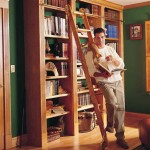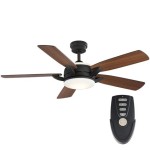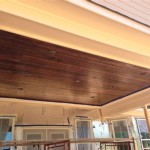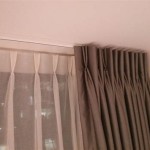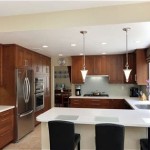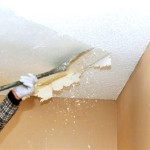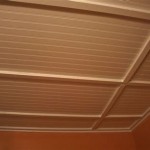Best Low Profile Ceiling Fans With Lights: A Comprehensive Guide
Ceiling fans are a staple in many homes, offering both aesthetic appeal and functional benefits. They circulate air, providing cooling comfort during warm months and aiding in heating distribution during colder periods when used in reverse. For rooms with low ceilings, standard ceiling fans can pose a challenge, potentially hindering movement and creating a visually cramped space. This is where low profile, or flush mount, ceiling fans with lights become essential. These fans are designed to sit closer to the ceiling, maximizing headroom without sacrificing airflow or illumination.
Selecting the right low profile ceiling fan with lights requires careful consideration of several factors, including room size, aesthetic preferences, lighting needs, and budget. This article provides a detailed overview of the best low profile ceiling fans with lights available, exploring their features, advantages, and potential drawbacks to assist in making an informed purchasing decision.
Understanding the Need for Low Profile Ceiling Fans
Standard ceiling fans typically hang from a downrod, which extends the fan below the ceiling. While this design is effective for rooms with higher ceilings, it can be problematic in rooms with ceilings lower than eight feet. The reduced clearance can create a safety hazard, particularly for taller individuals, and can visually shrink the room. Low profile ceiling fans, also known as flush mount or hugger fans, are designed to address this issue. These fans are mounted directly to the ceiling bracket, minimizing the space between the fan blades and the ceiling. This design maximizes headroom and provides a more comfortable and aesthetically pleasing environment.
Low profile ceiling fans with lights offer a practical solution for rooms where both air circulation and illumination are desired. They eliminate the need for separate lighting fixtures, freeing up valuable ceiling space and simplifying the overall design of the room. These fans are particularly well-suited for bedrooms, kitchens, hallways, and other areas with limited ceiling height.
Key Features to Consider When Choosing a Low Profile Ceiling Fan With Lights
Numerous low profile ceiling fans with lights are available on the market, each boasting different features and specifications. To ensure the selected fan meets specific needs and preferences, consider the following key features:
Fan Blade Size: The size of the fan blades directly affects the amount of airflow the fan can generate. Larger blades will move more air, making them suitable for larger rooms. Smaller blades are more appropriate for smaller spaces. Fan blade size is generally measured in inches, with common sizes ranging from 42 inches to 52 inches for low profile models. Refer to the manufacturer's recommendations for room size to ensure optimal performance. A general guideline is: fans with 42-inch blades are suitable for rooms up to 100 square feet, 44-inch to 52-inch blades are suitable for rooms up to 400 square feet, and 52-inch and larger blades are suitable for rooms larger than 400 square feet. However, these are estimates, and other factors like room shape and contents should be considered.
Motor Type and Speed: The motor is the heart of the ceiling fan, and its quality directly impacts the fan's performance and longevity. Common motor types include AC (Alternating Current) and DC (Direct Current) motors. AC motors are typically more affordable but less energy-efficient and quieter than DC motors. DC motors are more energy-efficient, operate more quietly, and often offer more speed options. The number of speeds a fan offers allows for greater control over airflow. Most fans offer at least three speeds (low, medium, and high), but some higher-end models may offer up to six speeds or more.
Lighting Type and Brightness: Low profile ceiling fans with lights typically incorporate LED (Light Emitting Diode) lighting, which is energy-efficient and long-lasting. Consider the brightness of the light, measured in lumens, and the color temperature, measured in Kelvin. Brighter lights, with higher lumen values, are suitable for rooms where ample illumination is needed. Warmer color temperatures (around 2700K-3000K) create a cozy and inviting atmosphere, while cooler color temperatures (around 4000K-5000K) provide a brighter and more energizing light. Dimmable lighting is a desirable feature, allowing for adjustable brightness levels to suit different situations. Additionally, consider the type of light fixture integrated into the fan. Some fans have enclosed light kits, while others have exposed bulbs.
Control Options: Ceiling fans can be controlled using a pull chain, a wall control, or a remote control. Pull chains are the most basic control method and are typically used for controlling the fan speed and light. Wall controls offer more convenient access to the fan's functions and can often be used to control the fan speed, light, and dimming. Remote controls provide the greatest flexibility, allowing for control from anywhere in the room. Some fans also offer smart home integration, allowing for control via smartphone apps or voice assistants.
Style and Finish: The aesthetic appeal of the ceiling fan is an important consideration, as it should complement the overall design of the room. Low profile ceiling fans are available in a wide range of styles and finishes, from traditional to modern. Consider the color and material of the fan blades, the motor housing, and the light fixture to ensure a cohesive look. Common finishes include brushed nickel, oil-rubbed bronze, white, and black. The style of the fan should reflect the overall décor of the room. For instance, a sleek, minimalist fan would be well-suited for a modern space, while a fan with ornate details would be more appropriate for a traditional setting.
Energy Efficiency: Look for fans with the Energy Star certification, which indicates that the fan meets strict energy efficiency guidelines set by the Environmental Protection Agency (EPA). Energy Star certified fans use significantly less energy than non-certified fans, reducing electricity costs and minimizing environmental impact. The fan's energy efficiency is typically measured in CFM/watt, which represents the cubic feet per minute of airflow per watt of electricity consumed. Higher CFM/watt values indicate greater energy efficiency.
Reversible Motor: A reversible motor allows the fan to operate in both forward and reverse directions. In the summer, the fan should be set to rotate counterclockwise, creating a downdraft that provides a cooling breeze. In the winter, the fan should be set to rotate clockwise at a low speed, drawing cool air up towards the ceiling and pushing warm air down into the room. This helps to distribute heat more evenly and reduce heating costs.
Warranty: A reputable manufacturer will offer a warranty on their ceiling fans, providing protection against defects in materials and workmanship. Check the warranty terms carefully to understand the coverage period and what is covered. A longer warranty period typically indicates a higher-quality product.
Exploring Different Types of Low Profile Ceiling Fans With Lights
The market offers a diverse selection of low profile ceiling fans with lights, catering to various needs and preferences. These can be broadly categorized based on style, functionality, and features:
Traditional Low Profile Ceiling Fans: These fans feature classic designs with ornate details, such as decorative blade irons and intricate motor housings. They often incorporate traditional lighting fixtures, such as candelabra-style lights or frosted glass shades. Traditional low profile ceiling fans are typically available in finishes like oil-rubbed bronze, antique brass, and polished brass, complementing traditional décor styles.
Modern Low Profile Ceiling Fans: Modern fans emphasize clean lines, minimalist designs, and contemporary finishes. They often feature sleek blades made from materials like metal or ABS plastic and incorporate integrated LED lighting. Modern low profile ceiling fans are typically available in finishes like brushed nickel, matte black, and white, blending seamlessly with modern and contemporary interiors. These fans often prioritize functionality and energy efficiency, incorporating features like DC motors and smart home integration.
Rustic Low Profile Ceiling Fans: Rustic fans are designed to evoke a sense of warmth and natural beauty. They often feature blades made from reclaimed wood or wood-look materials and incorporate rustic finishes like distressed wood or weathered metal. Rustic low profile ceiling fans may also include Edison-style bulbs or caged light fixtures, adding to their rustic charm. These fans are well-suited for homes with farmhouse, industrial, or bohemian décor styles.
Smart Low Profile Ceiling Fans: Smart ceiling fans offer advanced features and connectivity, allowing for control via smartphone apps or voice assistants like Amazon Alexa or Google Assistant. These fans can be programmed to operate on schedules, automatically adjusting the fan speed and lighting based on room temperature or time of day. Smart low profile ceiling fans often incorporate features like remote control, dimming, and color temperature adjustment, providing enhanced convenience and customization. They can be integrated into smart home ecosystems, allowing for seamless control of lighting, temperature, and other smart devices.
Installation Considerations for Low Profile Ceiling Fans With Lights
Proper installation is crucial for the safe and effective operation of a low profile ceiling fan with lights. It is recommended to consult with a qualified electrician if unsure about any aspect of the installation process.
Electrical Wiring: Ensure that the electrical wiring is compatible with the ceiling fan's voltage and amperage requirements. A dedicated circuit may be required for the fan, depending on the existing wiring configuration. Turn off the power to the circuit breaker before starting any electrical work. If unfamiliar with electrical wiring, it is best to hire a professional electrician to handle the wiring.
Structural Support: The ceiling fan must be securely mounted to a structurally sound ceiling joist or a fan-rated electrical box. Standard electrical boxes are not designed to support the weight and vibrations of a ceiling fan. A fan-rated electrical box is specifically designed to handle the load and should be used for all ceiling fan installations. Ensure that the mounting bracket is securely attached to the joist or electrical box using appropriate screws or bolts.
Clearance: Ensure that there is adequate clearance between the fan blades and any surrounding objects, such as walls, furniture, or light fixtures. The fan blades should be at least 18 inches away from any walls and at least 7 feet above the floor. This clearance is important for safety and to ensure optimal airflow.
Balancing: After installation, the fan blades may need to be balanced to prevent wobbling. Most ceiling fans come with a balancing kit that includes small weights that can be attached to the blades to correct any imbalances. Follow the manufacturer's instructions for balancing the fan blades.
Testing: After completing the installation, test the fan to ensure that it is operating correctly. Check the fan speed settings, the lighting, and the remote control (if applicable). Listen for any unusual noises or vibrations. If any issues are detected, consult the manufacturer's troubleshooting guide or contact a qualified electrician.
By carefully considering these factors and following the manufacturer's instructions, you can select and install the perfect low profile ceiling fan with lights for your needs, enhancing the comfort, style, and functionality of your home.

Low Profile Ceiling Fans Flush Mount Hunter Fan

11 Best Low Profile Ceiling Fans 2024 Reviews And Guide

Low Profile Ceiling Fans Flush Mount Hunter Fan

Hugger Ceiling Fans Sleek Solutions For Low Spaces Delmarfans Com

Low Profile Ceiling Fans Flush Mount Hunter Fan

51 Ceiling Fans With Lights That Will Blow You Away

How To For A Ceiling Fan Reviews By Wirecutter

16 Best Ceiling Fans For Extra Airflow In 2024

Leeaglegry 20 Small Ceiling Fans With Lights Remote App Control Low Profile Gold Fan For Bedroom 6 Sd And Timer Function Modern Flush Mount Light

Hugger Ceiling Fans Sleek Solutions For Low Spaces Delmarfans Com
Related Posts

